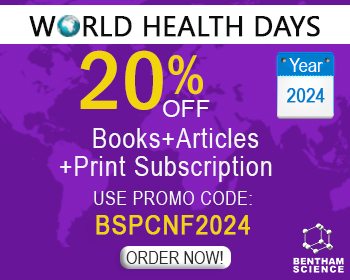Abstract
Alzheimer’s disease is a devastating and invariably fatal neurodegenerative brain disorder with no cure. AD is characterized by two pathological protein deposits, the senile plaques composed mainly of amyloid-β (Aβ) peptide and the neurofibrillary tangles which are bundles of paired helical filaments (PHF) of protein tau. In addition, oxidative stress, disorders in signal transduction and metal ions dyshomeostasis also play significant roles in the development of AD. A large body of studies suggests that selenium (Se), either as Se-containing compounds or as selenoproteins, may be beneficial in reducing Alzheimer’s pathology. Se is involved in most of the molecular pathways that are important in the progression of AD. We reviewed the literature regarding Se and AD and discussed the roles and mechanisms of Se in AD, as well as the potential of Se in AD prevention.
Keywords: Alzheimer’s disease (AD), Amyloid-β, Metal, Oxidative stress, Selenium (Se), Selenoprotein, Signal transduction, Tau
Current Topics in Medicinal Chemistry
Title:Potential Roles of Selenium and Selenoproteins in the Prevention of Alzheimer's Disease
Volume: 16 Issue: 8
Author(s): Xiubo Du, Chao Wang and Qiong Liu
Affiliation:
Keywords: Alzheimer’s disease (AD), Amyloid-β, Metal, Oxidative stress, Selenium (Se), Selenoprotein, Signal transduction, Tau
Abstract: Alzheimer’s disease is a devastating and invariably fatal neurodegenerative brain disorder with no cure. AD is characterized by two pathological protein deposits, the senile plaques composed mainly of amyloid-β (Aβ) peptide and the neurofibrillary tangles which are bundles of paired helical filaments (PHF) of protein tau. In addition, oxidative stress, disorders in signal transduction and metal ions dyshomeostasis also play significant roles in the development of AD. A large body of studies suggests that selenium (Se), either as Se-containing compounds or as selenoproteins, may be beneficial in reducing Alzheimer’s pathology. Se is involved in most of the molecular pathways that are important in the progression of AD. We reviewed the literature regarding Se and AD and discussed the roles and mechanisms of Se in AD, as well as the potential of Se in AD prevention.
Export Options
About this article
Cite this article as:
Du Xiubo, Wang Chao and Liu Qiong, Potential Roles of Selenium and Selenoproteins in the Prevention of Alzheimer's Disease, Current Topics in Medicinal Chemistry 2016; 16 (8) . https://dx.doi.org/10.2174/1568026615666150827094936
| DOI https://dx.doi.org/10.2174/1568026615666150827094936 |
Print ISSN 1568-0266 |
| Publisher Name Bentham Science Publisher |
Online ISSN 1873-4294 |
Call for Papers in Thematic Issues
Chemistry Based on Natural Products for Therapeutic Purposes
The development of new pharmaceuticals for a wide range of medical conditions has long relied on the identification of promising natural products (NPs). There are over sixty percent of cancer, infectious illness, and CNS disease medications that include an NP pharmacophore, according to the Food and Drug Administration. Since NP ...read more
Current Trends in Drug Discovery Based on Artificial Intelligence and Computer-Aided Drug Design
Drug development discovery has faced several challenges over the years. In fact, the evolution of classical approaches to modern methods using computational methods, or Computer-Aided Drug Design (CADD), has shown promising and essential results in any drug discovery campaign. Among these methods, molecular docking is one of the most notable ...read more
Drug Discovery in the Age of Artificial Intelligence
In the age of artificial intelligence (AI), we have witnessed a significant boom in AI techniques for drug discovery. AI techniques are increasingly integrated and accelerating the drug discovery process. These developments have not only attracted the attention of academia and industry but also raised important questions regarding the selection ...read more
From Biodiversity to Chemical Diversity: Focus of Flavonoids
Flavonoids are the largest group of polyphenols, plant secondary metabolites arising from the essential aromatic amino acid phenylalanine (or more rarely from tyrosine) via the phenylpropanoid pathway. The flavan nucleus is the basic 15-carbon skeleton of flavonoids (C6-C3-C6), which consists of two phenyl rings (A and B) and a heterocyclic ...read more
 109
109 4
4 1
1 1
1
- Author Guidelines
- Graphical Abstracts
- Fabricating and Stating False Information
- Research Misconduct
- Post Publication Discussions and Corrections
- Publishing Ethics and Rectitude
- Increase Visibility of Your Article
- Archiving Policies
- Peer Review Workflow
- Order Your Article Before Print
- Promote Your Article
- Manuscript Transfer Facility
- Editorial Policies
- Allegations from Whistleblowers
- Announcements
Related Articles
-
The Role of the Osteoimmune Axis in the Inflammation of the Inner Auditory Ear and with Regard to the Putative Anticarcinogenetic Principle: Part 2
Inflammation & Allergy - Drug Targets (Discontinued) Tocotrienols Target PI3K/Akt Signaling in Anti-Breast Cancer Therapy
Anti-Cancer Agents in Medicinal Chemistry Electrochemical Study of Ellipticine Interaction with Single and Double Stranded Oligonucleotides
Anti-Cancer Agents in Medicinal Chemistry An Update on Overcoming MDR1-Mediated Multidrug Resistance in Cancer Chemotherapy
Current Pharmaceutical Design Targeting Ovarian Cancer-Initiating Cells
Anti-Cancer Agents in Medicinal Chemistry The Neurotrophins and Their Role in Alzheimers Disease
Current Neuropharmacology The Immunoregulatory Protein Human B7H3 is a Tumor-Associated Antigen that Regulates Tumor Cell Migration and Invasion
Current Cancer Drug Targets Down with the Erythropoietin. Long Live the Erythropoietin !
Current Drug Targets Roles of Nicotinic Acetylcholine Receptors in Stem Cell Survival/Apoptosis, Proliferation and Differentiation
Current Molecular Medicine Assessment In Vitro of a Novel Therapeutic Strategy for Glioma, Combining Herpes Simplex Virus HSV1716-mediated Oncolysis with Gene Transfer and Targeted Radiotherapy
Medicinal Chemistry The Pro-Apoptotic Substance Thapsigargin Selectively Stimulates Re-Growth of Brain Capillaries
Current Neurovascular Research Ignored Avenues in Alpha-Synuclein Associated Proteopathy
CNS & Neurological Disorders - Drug Targets Overview of Brain Tumor Stem Cells – Implications for Treatment
Current Signal Transduction Therapy Recent Multi-target Approaches on the Development of Anti- Alzheimer's Agents Integrating Metal Chelation Activity
Current Medicinal Chemistry Chips for Brains
Current Genomics The Quest for a Tumor Suppressor Gene Phenotype
Current Molecular Medicine Emerging Roles of P2X Receptors in Cancer
Current Medicinal Chemistry Design and Microwave-Assisted Synthesis of Aza-Resveratrol Analogs with Potent Cholinesterase Inhibition
CNS & Neurological Disorders - Drug Targets Targeting Ion Channels for New Strategies in Cancer Diagnosis and Therapy
Current Clinical Pharmacology Synthetic Lethality to Overcome Cancer Drug Resistance
Current Medicinal Chemistry
























